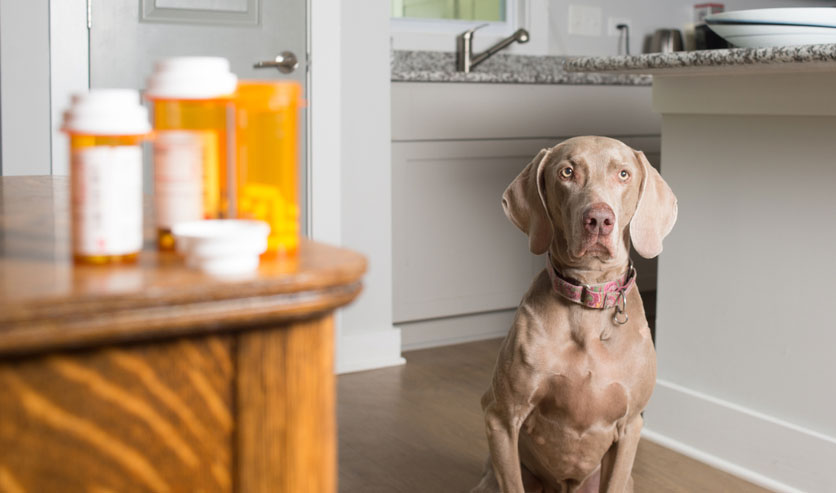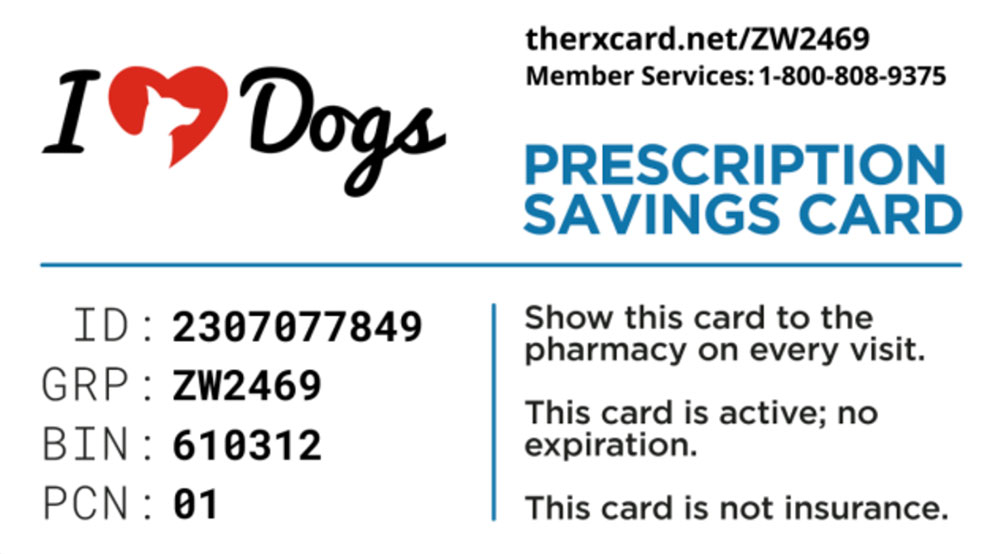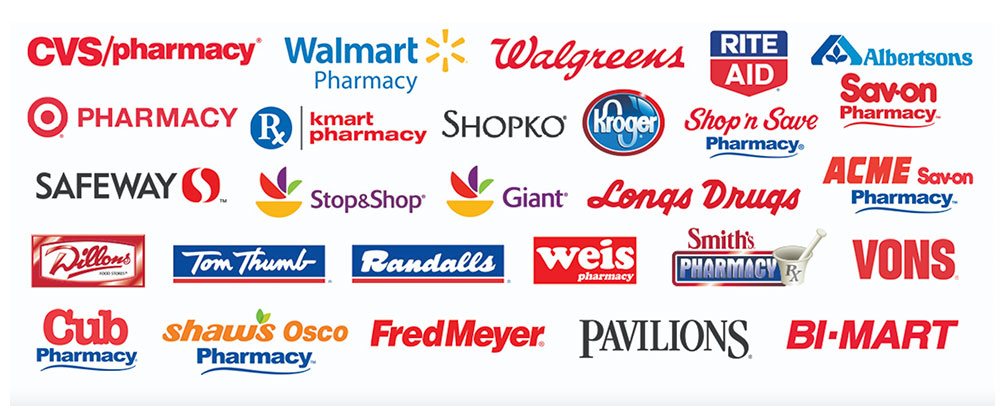Are you looking for a way to save your dog’s Nystatin prescription? Our Rx Discount Card for Pets can save you up to 80% of your pet’s Nystatin.
What Pharmacies Accept This Nystatin Coupon Card for Pets?
This card is accepted at over 60,000 participating pharmacies in the US, including:
How Much Will My Pet’s Nystatin Cost Using This Coupon?
In order to view a real-time pricing estimate, please use our pricing lookup tool here.
How Do Prescription Discount Cards for Pets Work? How Can It Help Me Save On My Dog’s Nystatin Prescription?
Prescription discount cards for pets can provide savings on a variety of medications, including Nystatin, by offering negotiated discounts on the cash price of prescriptions. Here’s a step-by-step process of how these cards work:
- Acquire a Card: Some prescription discount cards for pets are offered free of charge, while others may require a small fee. You can usually find and sign up for these online.
- Identify Participating Pharmacies: The card will list participating pharmacies where you can use it. These usually include a range of national chains, local pharmacies, and sometimes online pharmacies.
- Present the Card at the Pharmacy: When filling your pet’s prescription, present your discount card at the pharmacy.
- Receive a Discount: The card provides a discount on the medication’s cash price. The pharmacist will apply the negotiated discount at the point of purchase.
- You Pay the Discounted Price: You’ll pay the discounted price directly to the pharmacy.
When it comes to your dog’s Nystatin prescription, a prescription discount card can help by lowering the overall cost of the medication. The amount you save will depend on the specific card, the pharmacy, and the retail price of the medication. The savings can be significant, making the cost of necessary medications more manageable for pet owners.
Keep in mind:
- Prescription discount cards are not insurance and can’t be used in conjunction with insurance.
- The cards do not provide a discount on the veterinarian’s consultation or visit fee, just on the medications.
- Not all medications are covered by all discount cards, and discounts can vary.
- Always compare prices at different pharmacies and discount programs to make sure you’re getting the best price.
It’s always recommended to consult with your veterinarian about your pet’s medication and to discuss any concerns about the cost of treatment. They can provide advice and may be able to suggest alternative options or other cost-saving resources.
What Are Some Common Reasons Nystatin is Prescribed for Dogs?

Nystatin is an antifungal medication that is used to treat fungal infections, specifically those caused by the Candida species of yeast. In dogs, Nystatin is typically used for:
- Yeast Infections of the Skin and Ears: Candida overgrowth can lead to infections of the skin, ears, and other areas. Nystatin is often effective in treating these types of infections.
- Gastrointestinal Candidiasis: Candida yeast can overgrow in the digestive tract, leading to symptoms like diarrhea, nausea, and vomiting. In some cases, Nystatin may be used to treat these infections, although other antifungal medications are often first-line treatments.
- Oral Candidiasis (Thrush): If a dog develops oral Candida infection, which might be characterized by white patches in the mouth, a Nystatin oral suspension might be prescribed.
- Topical Wound Treatment: In some cases, Nystatin might be used as a component of topical wound care, especially if a wound has become infected with Candida yeast.
Remember, like all drugs, Nystatin should only be given to your dog under the direction of a veterinarian. It’s important to complete the full course of the medication, even if your dog seems to be feeling better, to prevent the infection from returning or the yeast from becoming resistant to the medication. Side effects are relatively rare but can include digestive upset, rash, or, in some cases, more severe reactions. Always inform your vet if you notice any changes in your pet while they are taking Nystatin or any other medication.
What Are Some Other Ways I Can Save Money on My Pet’s Nystatin Prescription?
If you’re looking for ways to save money on your pet’s Nystatin prescription, beyond using a pet prescription discount card, here are a few strategies you might consider:
- Price Comparison: Prices can vary significantly between different pharmacies, so it can be worth your while to call around or check online to compare prices at different locations.
- Generic Medications: If a generic version of Nystatin is available, it will likely be cheaper than the brand-name version. Be sure to check with your vet to see if a generic version would be appropriate and effective for your pet’s condition.
- Manufacturer Discounts or Programs: Some pharmaceutical companies offer discount programs or coupons to help offset the cost of their medications. Check the manufacturer’s website or ask your vet if they know of any such programs for Nystatin.
- Buying in Bulk: If your pet will be on Nystatin for a prolonged period, it may be cheaper to buy the medication in larger quantities. Again, you should consult with your vet to ensure this is a viable and safe option for your pet.
- Pet Insurance: If your pet insurance covers prescription medications, it may cover some or all of the cost of Nystatin. Each insurance plan is different, so you’ll need to check your specific policy details.
- Non-Profit Organizations: Some non-profit organizations help pet owners afford the cost of their pet’s medications. These typically operate by providing the medication at a reduced cost or offering financial assistance.
- Talk to Your Vet: If the cost of the medication is a significant concern, speak with your vet. They understand these concerns and may be able to suggest alternatives, work out a payment plan, or provide other advice to help manage the costs.
It’s essential to always discuss with your veterinarian before making any changes to your pet’s medication regimen. They can provide guidance based on their professional knowledge and your pet’s specific health needs.


 Toledo, United States.
Toledo, United States.